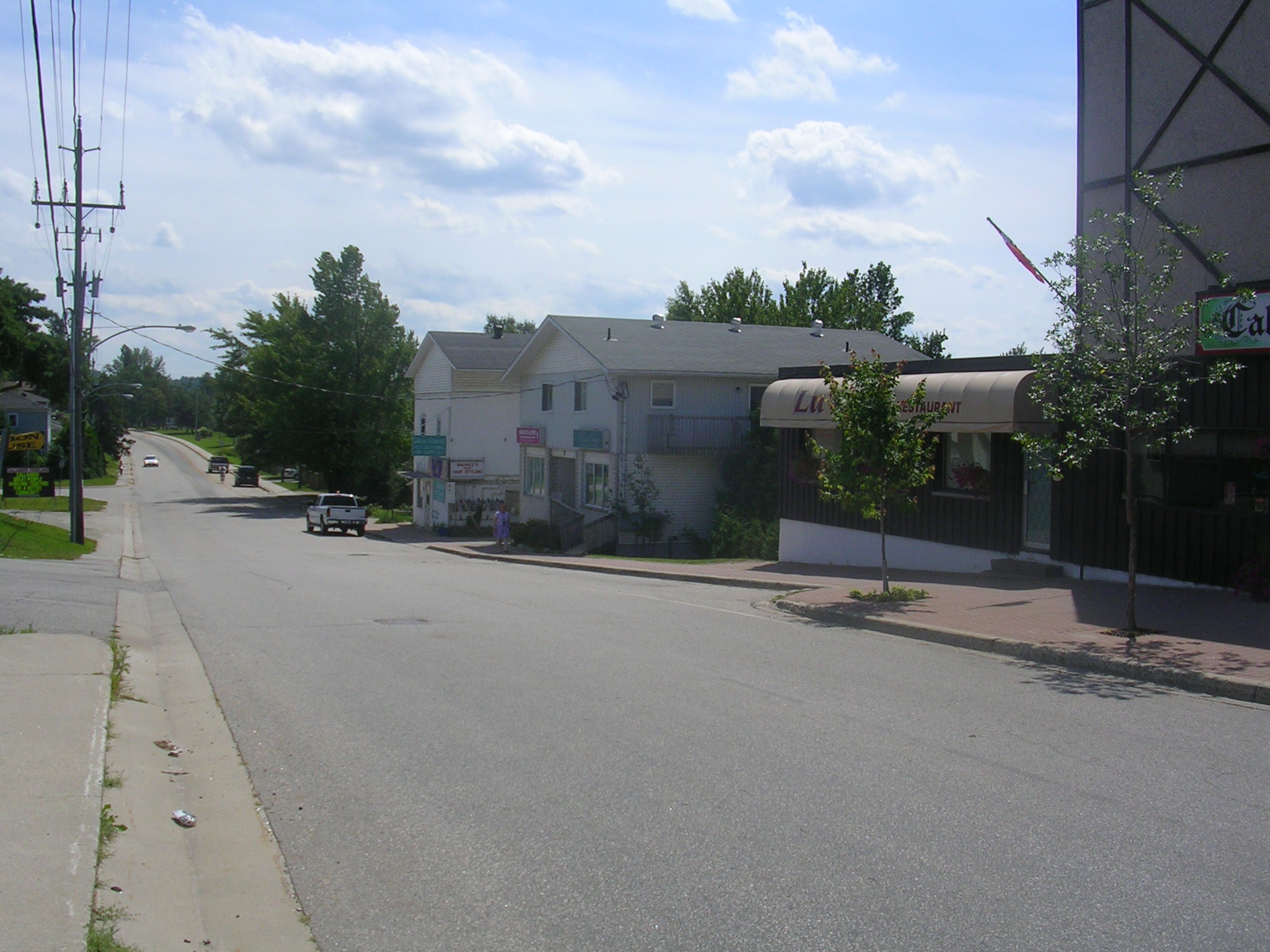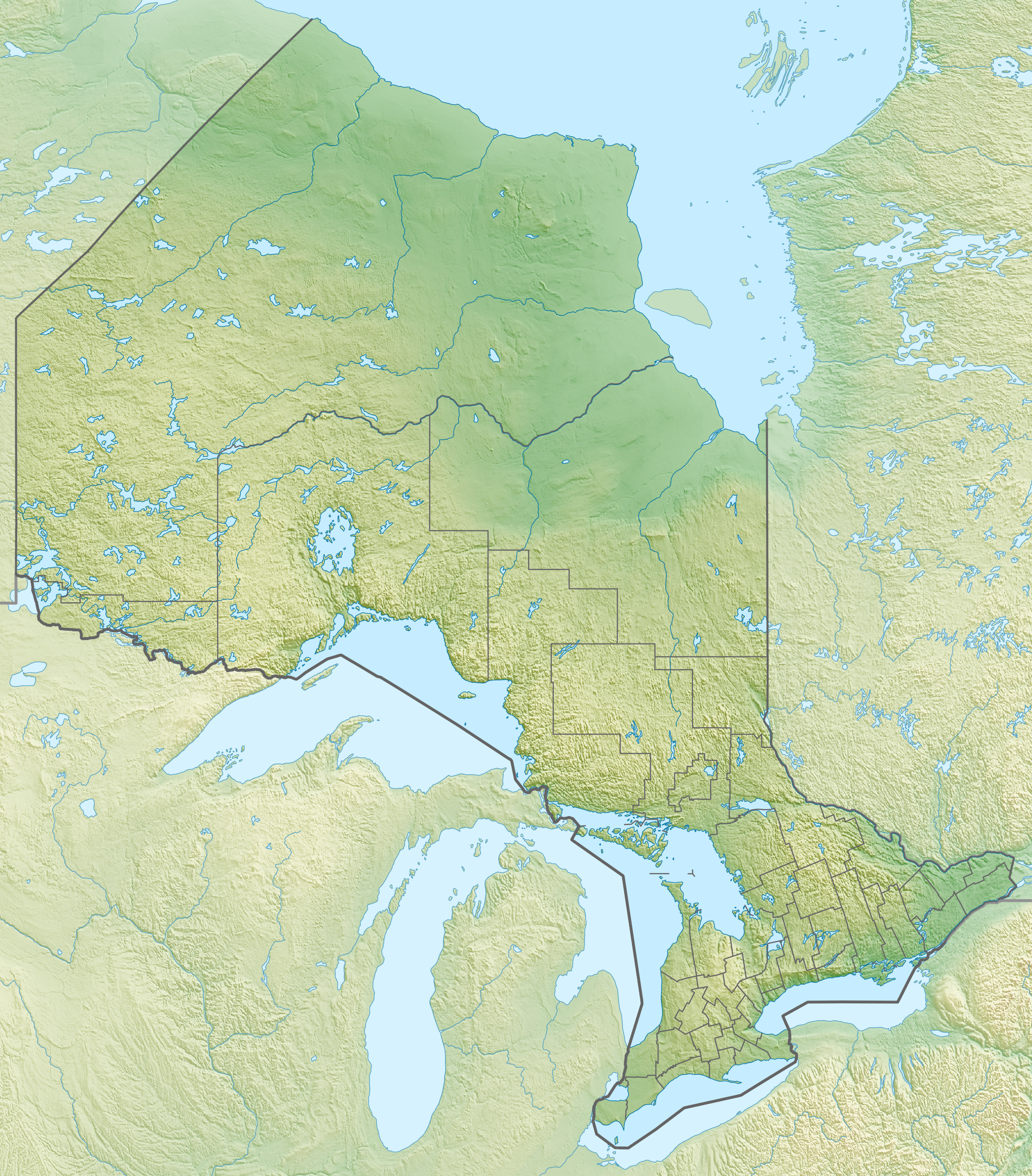|
Sand Lake (Kearney, Ontario)
Sand Lake ''(French: lac Sand)'' is a lake in the town of Kearney, Almaguin Highlands, Parry Sound District, Ontario, Canada. An unincorporated community of ''Sand Lake, Ontario'' could be found just north of Sand Lake prior to the amalgamation with Kearney in 1979. Sand Lake is also host to only one camp, and much of the shore of the lake is Precambrian rock of the Canadian Shield The Canadian Shield (french: Bouclier canadien ), also called the Laurentian Plateau, is a geologic shield, a large area of exposed Precambrian igneous and high-grade metamorphic rocks. It forms the North American Craton (or Laurentia), the anc .... There are only a few occurrences of sandy beach around the lake shoreline due largely to runoff water erosion carrying sand from creeks from the surrounding elevated rocky terrain. However, a good portion of the shallow waters around the shore are sand as the name of the lake suggests. Sand Lake is part of the Magnetawan River system. The river ent ... [...More Info...] [...Related Items...] OR: [Wikipedia] [Google] [Baidu] |
Kearney, Ontario
Kearney is a town and municipality in the Almaguin Highlands region of Parry Sound District of Ontario, Canada. With a landmass of 528 square kilometres and a year-round population of 974 in the Canada 2021 Census, Kearney claims to be the "Biggest Little Town in Ontario." History Perry Township was opened to settlement in 1873 and the first two Post Offices in the township were established at Scotia and Emsdale, on the Muskoka Road. In 1879, in the north-east corner of the township, settlers Arthur J. O'Neil and his partner William Kearney opened a store on the 12th Concession, near what is now Cherry Hill Road, (west of Beaver Lake). In the following year a post office was opened in "Kearney Store" and inherited the name. In those days the closest railway was the Northern at Gravenhurst from which all supplies were brought up the Muskoka Road. Kearney prospered as a logging town with many sawmills and lumber camps. The logs were floated down the Magnetawan River, some as f ... [...More Info...] [...Related Items...] OR: [Wikipedia] [Google] [Baidu] |
Parry Sound District, Ontario
Parry Sound District is a census division of the Canadian province of Ontario. Its boundaries are District of Muskoka to the south, the Sudbury District to the north-northwest, the French River and Lake Nipissing in the north, Nipissing District and North Bay in the north and east and parts of Algonquin Park in the northeast. In 2016, the population was 42,824. The land area is ; the population density was . It is geographically in Southern Ontario, but the Ontario and federal governments administer it as part of Northern Ontario. Like other census divisions in Northern Ontario, it does not have an incorporated county, regional municipality, or district municipality level of government but instead serves as a purely territorial division like the other districts of Northern Ontario. Instead of an upper tier of municipal administration, all government services in the district are provided either by the local municipalities or by the provincial government itself. Some communities ... [...More Info...] [...Related Items...] OR: [Wikipedia] [Google] [Baidu] |
Ontario
Ontario ( ; ) is one of the thirteen provinces and territories of Canada.Ontario is located in the geographic eastern half of Canada, but it has historically and politically been considered to be part of Central Canada. Located in Central Canada, it is Canada's most populous province, with 38.3 percent of the country's population, and is the second-largest province by total area (after Quebec). Ontario is Canada's fourth-largest jurisdiction in total area when the territories of the Northwest Territories and Nunavut are included. It is home to the nation's capital city, Ottawa, and the nation's most populous city, Toronto, which is Ontario's provincial capital. Ontario is bordered by the province of Manitoba to the west, Hudson Bay and James Bay to the north, and Quebec to the east and northeast, and to the south by the U.S. states of (from west to east) Minnesota, Michigan, Ohio, Pennsylvania, and New York. Almost all of Ontario's border with the United States f ... [...More Info...] [...Related Items...] OR: [Wikipedia] [Google] [Baidu] |
Magnetawan River
The Magnetawan River is a long river in Parry Sound District, Ontario, Canada. The river flows 175 km from its source of Magnetawan Lake inside Algonquin Provincial Park to empty into Georgian Bay at the community of Britt on Byng Inlet. The name of the river means "swiftly flowing waters" in the Ojibwa language. At the end of the 19th century, the river was used to float white pine logs to sawmills downstream. The river gained recent renown when it was featured in Bill Mason's film Waterwalker. The river has numerous rapids, such as, "The Thirty Dollar Rapids", "The Fourteen", "The Ten", the "Potato Rapids", "Poverty Bay Chutes", and "Cody Rapids". The town of Magnetawan is located on the river between Lake Cecebe and Ahmic Lake. Locks were built here on the river to allow steamboats to travel further down the river from the railway station at Burk's Falls. The locks officially opened on July 8, 1886 and are still in use today. [...More Info...] [...Related Items...] OR: [Wikipedia] [Google] [Baidu] |
Lake
A lake is an area filled with water, localized in a basin, surrounded by land, and distinct from any river or other outlet that serves to feed or drain the lake. Lakes lie on land and are not part of the ocean, although, like the much larger oceans, they do form part of the Earth's water cycle. Lakes are distinct from lagoons, which are generally coastal parts of the ocean. Lakes are typically larger and deeper than ponds, which also lie on land, though there are no official or scientific definitions. Lakes can be contrasted with rivers or streams, which usually flow in a channel on land. Most lakes are fed and drained by rivers and streams. Natural lakes are generally found in mountainous areas, rift zones, and areas with ongoing glaciation. Other lakes are found in endorheic basins or along the courses of mature rivers, where a river channel has widened into a basin. Some parts of the world have many lakes formed by the chaotic drainage patterns left over from the la ... [...More Info...] [...Related Items...] OR: [Wikipedia] [Google] [Baidu] |
Almaguin Highlands
The Almaguin Highlands Region (colloquially known as Almaguin, also referred to as 'the Highlands') in Ontario, Canada, covers approximately comprising the eastern half of Parry Sound District. It is bounded by Muskoka in the south, and by Lake Nipissing and Nipissing District in the north. The eastern edge abuts the western boundary of Algonquin Provincial Park, whereas the western boundary of the Almaguin Highlands is generally regarded to be the mid east-west point of Parry Sound District. Originally derived from the words Algonquin, Magnetawan, and Seguin. the name Almaguin is now used to describe the marketing region of East Parry Sound. Subdivisions The region includes fifteen incorporated municipalities, three local service boards (LSB) across eight unincorporated geographic townships, and one unincorporated geographic township without a local services board, which can be grouped into three subregions. North Almaguin * Municipality of Callander * Township of Nipiss ... [...More Info...] [...Related Items...] OR: [Wikipedia] [Google] [Baidu] |
Canada
Canada is a country in North America. Its ten provinces and three territories extend from the Atlantic Ocean to the Pacific Ocean and northward into the Arctic Ocean, covering over , making it the world's second-largest country by total area. Its southern and western border with the United States, stretching , is the world's longest binational land border. Canada's capital is Ottawa, and its three largest metropolitan areas are Toronto, Montreal, and Vancouver. Indigenous peoples have continuously inhabited what is now Canada for thousands of years. Beginning in the 16th century, British and French expeditions explored and later settled along the Atlantic coast. As a consequence of various armed conflicts, France ceded nearly all of its colonies in North America in 1763. In 1867, with the union of three British North American colonies through Confederation, Canada was formed as a federal dominion of four provinces. This began an accretion of provinces an ... [...More Info...] [...Related Items...] OR: [Wikipedia] [Google] [Baidu] |
Precambrian
The Precambrian (or Pre-Cambrian, sometimes abbreviated pꞒ, or Cryptozoic) is the earliest part of Earth's history, set before the current Phanerozoic Eon. The Precambrian is so named because it preceded the Cambrian, the first period of the Phanerozoic Eon, which is named after Cambria, the Latinised name for Wales, where rocks from this age were first studied. The Precambrian accounts for 88% of the Earth's geologic time. The Precambrian is an informal unit of geologic time, subdivided into three eons ( Hadean, Archean, Proterozoic) of the geologic time scale. It spans from the formation of Earth about 4.6 billion years ago ( Ga) to the beginning of the Cambrian Period, about million years ago ( Ma), when hard-shelled creatures first appeared in abundance. Overview Relatively little is known about the Precambrian, despite it making up roughly seven-eighths of the Earth's history, and what is known has largely been discovered from the 1960s onwards. The Precambrian fossil ... [...More Info...] [...Related Items...] OR: [Wikipedia] [Google] [Baidu] |
Canadian Shield
The Canadian Shield (french: Bouclier canadien ), also called the Laurentian Plateau, is a geologic shield, a large area of exposed Precambrian igneous and high-grade metamorphic rocks. It forms the North American Craton (or Laurentia), the ancient geologic core of the North American continent. Glaciation has left the area with only a thin layer of soil, through which exposures of igneous bedrock resulting from its long volcanic history are frequently visible. As a deep, common, joined bedrock region in eastern and central Canada, the Shield stretches north from the Great Lakes to the Arctic Ocean, covering over half of Canada and most of Greenland; it also extends south into the northern reaches of the United States. Geographical extent The Canadian Shield is a physiographic division comprising four smaller physiographic provinces: the Laurentian Upland, Kazan Region, Davis and James. The shield extends into the United States as the Adirondack Mountains (connected by the Fro ... [...More Info...] [...Related Items...] OR: [Wikipedia] [Google] [Baidu] |
List Of Lakes In Ontario
This is an incomplete list of lakes in Ontario, a province of Canada. There are over 250,000 lakes in Ontario, constituting around 20% of the world's fresh water supply. Larger lake statistics This is a list of lakes of Ontario with an area larger than . # * 24 Mile Lake A B C D E F G *Gananoque Lake *Garson Lake *Gathering Lake *Gibson Lake (other), multiple lakes *Gillies Lake *Gloucester Pool *Go Home Lake * Golden Lake * Gordon Lake *Ghost Lake * Gould Lake (other), several lakes * Green Lake * Grundy Lake *Guelph Lake *Gull Lake (Ontario) * Gullrock Lake *Gunter Lake H * Halls Lake (Haliburton County) * Hammer Lake * Head Lake (Kawartha Lakes) * Head Lake (Haliburton County) * Heart Lake * Herbert Lake *Holden Lake * Lake Huron * Horseshoe Lakemultiple lakes I * Inn Lake * Indian Lake * Innis Lake * Irwin Lake *Ivanhoe Lake J * Jack Lake * Jeff Lake *Lake Joseph * Jules Lake *Jumping Cariboo Lake K * Kabinakagami Lake *Lake Kagawo ... [...More Info...] [...Related Items...] OR: [Wikipedia] [Google] [Baidu] |



